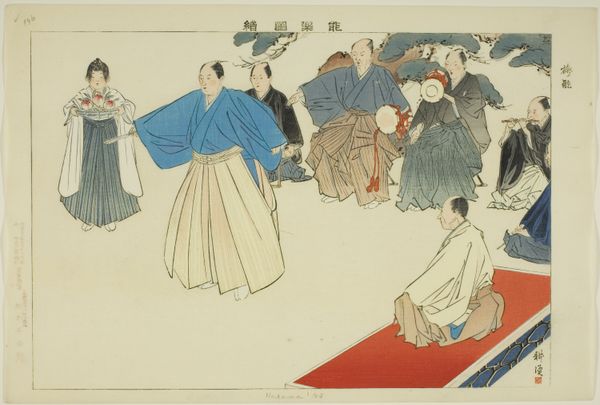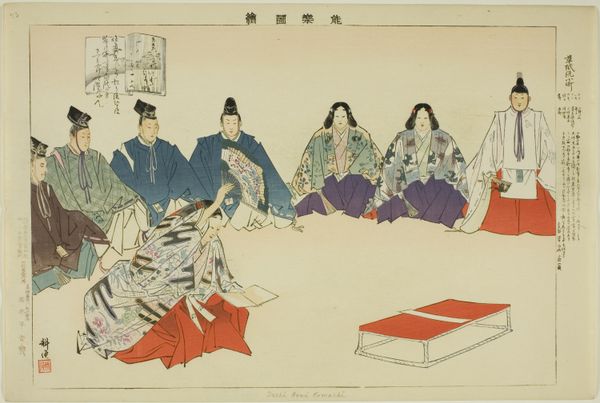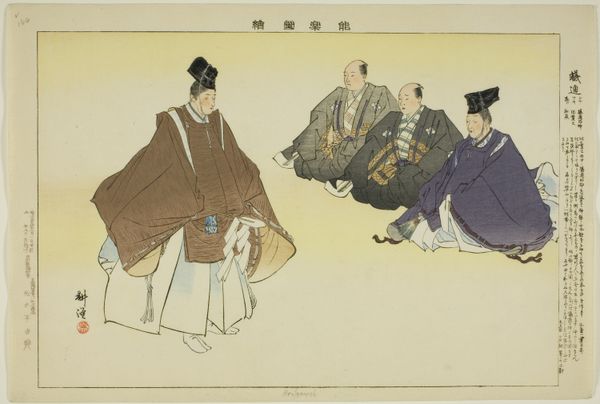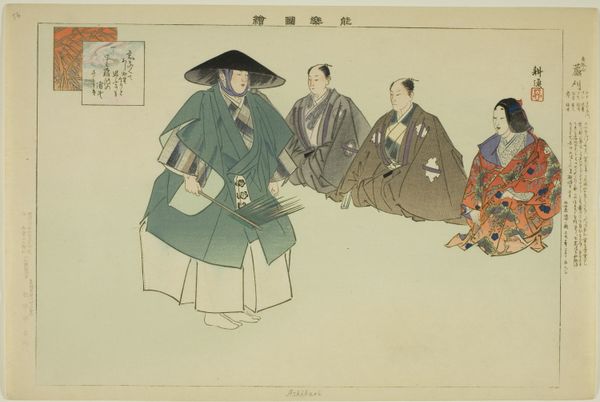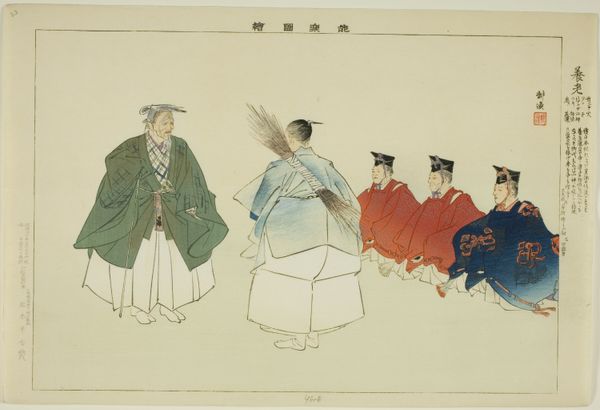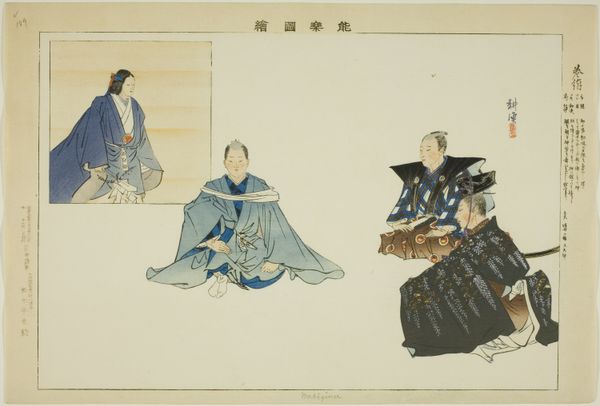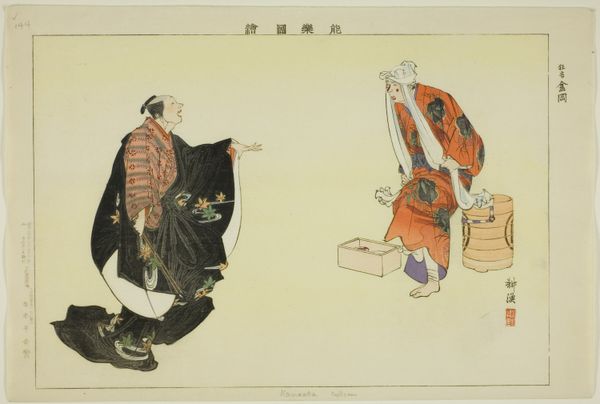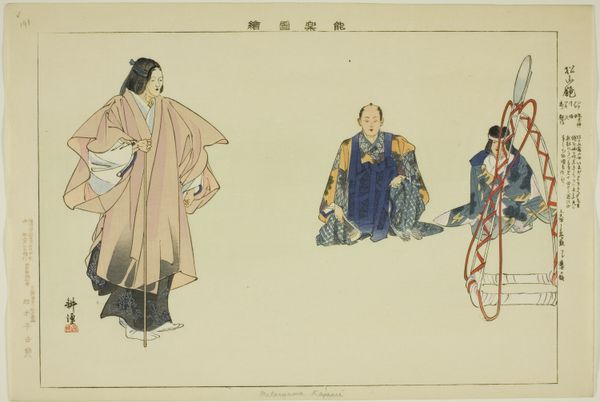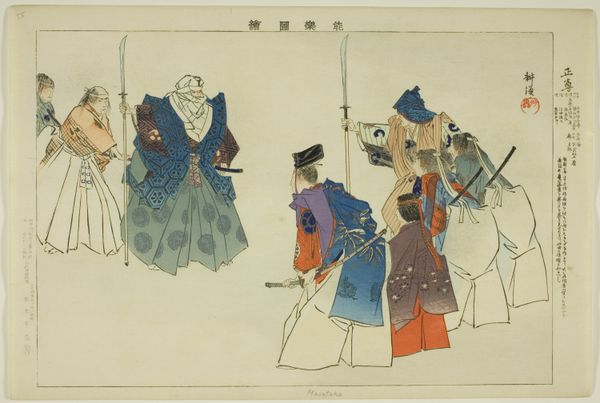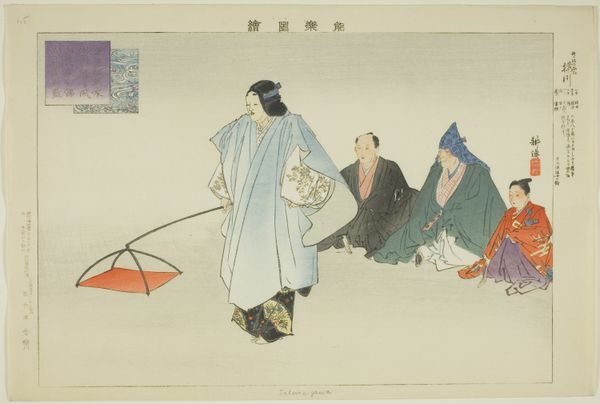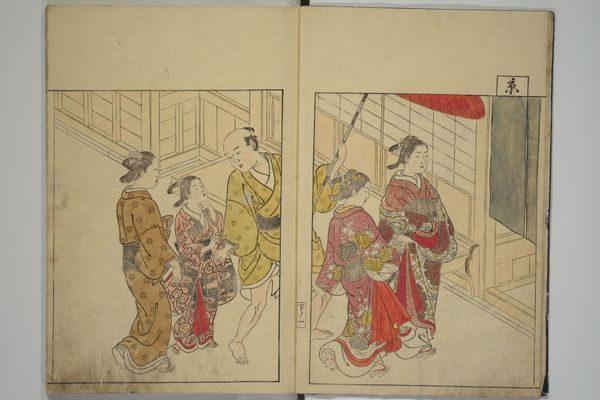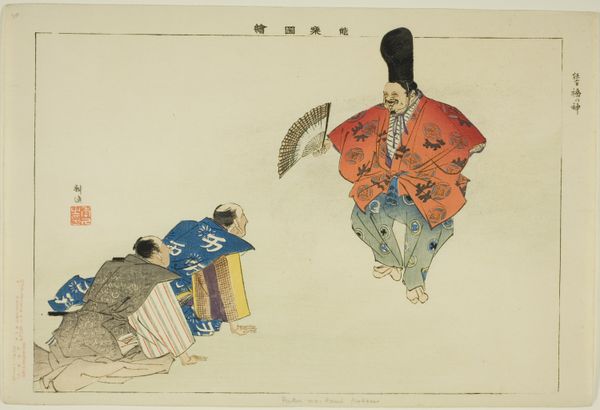
Haku Rakuten, from the series "Pictures of No Performances (Nogaku Zue)" 1898
0:00
0:00
Dimensions: Approx. 25.2 × 37.4 cm (10 × 14 4/3 in.)
Copyright: Public Domain
Curator: Welcome. The artwork before us is titled "Haku Rakuten, from the series Pictures of No Performances (Nogaku Zue)." Created in 1898 by Tsukioka Kogyo, this woodblock print resides here at The Art Institute of Chicago. Editor: It’s rather striking, the stark contrast between the masked figure and the observing courtiers. The subdued palette evokes a sense of solemn ritual. Curator: Indeed. This print is part of a larger series documenting Noh theater, which experienced a revival during the Meiji period after facing decline. Editor: So, there’s a narrative about cultural preservation already built into its existence. Tell me, what's the significance of this character of Haku Rakuten in performance and life? Curator: Haku Rakuten, or Bai Letian as he was known in China, was a Tang dynasty poet. In Noh theatre, he appears often in tales dealing with the exchange between different cultures, primarily with those from the East. His masked presentation emphasizes distance, mythic pastiche, and ceremony. Editor: Absolutely. The mask, though frozen, projects an air of profound experience and learned history. The costumes and careful arrangement really evoke courtly performance; a moment snatched out of theatrical time to speak to modernity. Do you think that the return to certain Japanese motifs was itself a kind of theater after a forced modernization? Curator: In a way, yes. Noh, deeply rooted in courtly tradition, experienced a kind of renaissance amid anxieties regarding rapid westernization. This print then acts as a visual symbol of cultural resilience, and the tension between honoring the past and facing the future. Editor: Fascinating how the symbols embedded within this scene intertwine. This print showcases more than just theatrical documentation. It reminds us that images become cultural mirrors, reflecting and refracting historical and social realities through an emotional lens. Curator: Precisely. Studying how artists responded to societal shifts enriches our understanding of art's public role. Editor: I’ll carry that point with me, examining the image once more. Thanks!
Comments
No comments
Be the first to comment and join the conversation on the ultimate creative platform.
